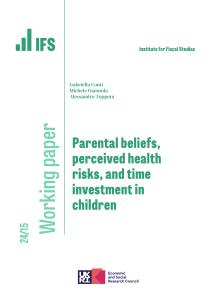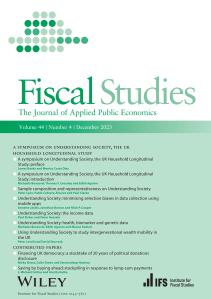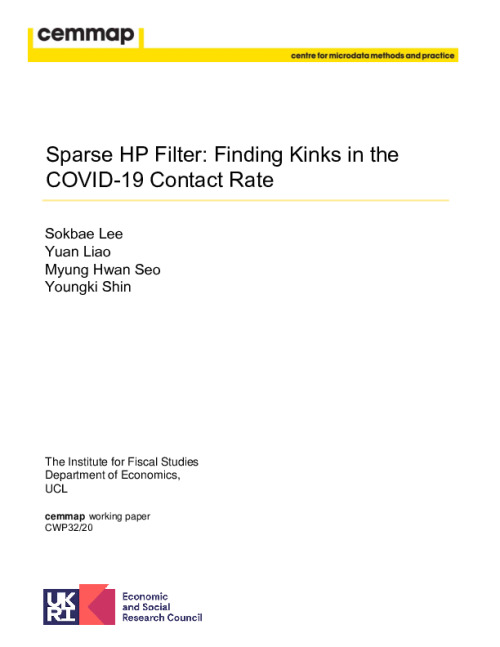Downloads
In this paper, we estimate the time-varying COVID-19 contact rate of a Susceptible-Infected-Recovered (SIR) model. Our measurement of the contact rate is constructed using data on actively infected, recovered and deceased cases. We propose a new trend filtering method that is a variant of the Hodrick-Prescott (HP) filter, constrained by the number of possible kinks. We term it the sparse HP filter and apply it to daily data from five countries: Canada, China, South Korea, the UK and the US. Our new method yields the kinks that are well aligned with actual events in each country. We find that the sparse HP filter provides a fewer kinks than the l1 trend filter, while both methods fitting data equally well. Theo-retically, we establish risk consistency of both the sparse HP and l1 trend filters. Ultimately, we propose to use time-varying contact growth rates to document and monitor outbreaks of COVID-19.
Authors

Research Fellow Columbia University
Sokbae is an IFS Research Fellow and a Professor at Columbia University, with an interest in Econometrics, Applied Microeconomics and Statistics.

Myung Hwan Seo

Youngki Shin

Yuan Liao
Working Paper details
- DOI
- 10.1920/wp.cem.2020.3220
- Publisher
- The IFS
Suggested citation
Lee, S et al. (2020). Sparse HP filter: Finding kinks in the COVID-19 contact rate. London: The IFS. Available at: https://ifs.org.uk/publications/sparse-hp-filter-finding-kinks-covid-19-contact-rate (accessed: 3 May 2024).
More from IFS
Understand this issue

Disability, illness and pain are real problems for the entire economy
28 August 2023

How did parents’ experiences in the labour market shape children’s social and emotional development during the pandemic?
1 August 2023

Work from home: what does the future look like?
24 May 2023
Policy analysis

The IFS Scottish Budget Report – 2024–25
22 February 2024

Scottish NHS is treating fewer patients than pre-pandemic, despite big increases in staffing
9 February 2024

Annual report on education spending in England: 2023
11 December 2023
Academic research

Parental beliefs, perceived health risks, and time investment in children
15 April 2024

Sample composition and representativeness on Understanding Society
2 February 2024

Understanding Society: minimising selection biases in data collection using mobile apps
2 February 2024
